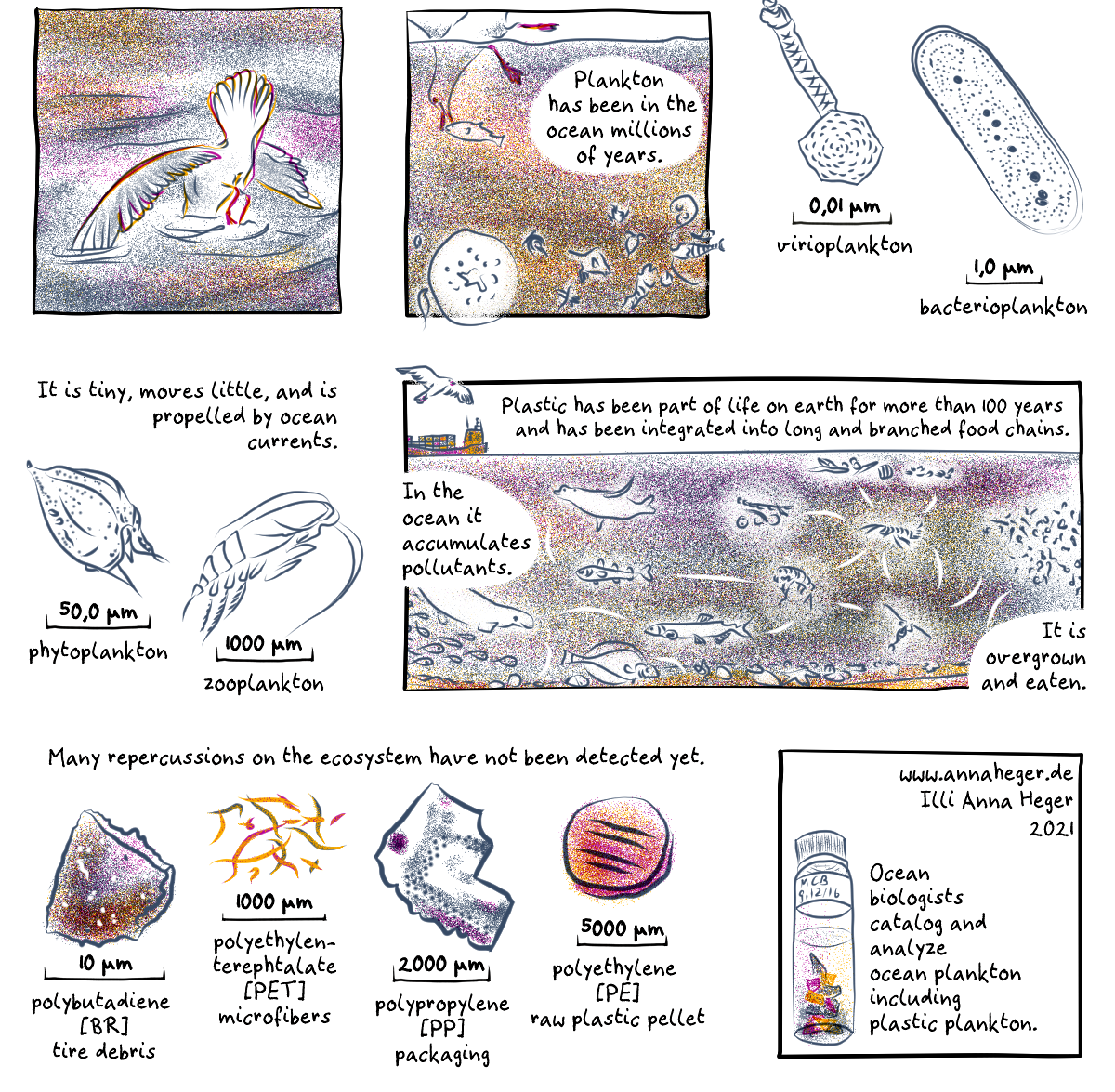background of the comic
Plankton is tiny, moves little, and due to industrialization micro plastic is part of it. Micro plastic is contained in cosmetics, and cars produce particulate matter and tire debris that is washed with the rain in to the ocean. Below the visual Comic find a text-based version Screenreadable Comic Version.
visual version of the comic
Transcript of Comic to Plain Text
Plastic Plankton
Minicomic 22
Under water, the ocean is dark blue gleaming with yellow and magenta reflections. A seahorse tries to snatch a piece of plastic. Behind it, other pieces of plastic colorful and partly overgrown.
A seagull takes flight at the sea shore. A line of groynes has been built perpendicular to the shoreline. A person with a backpack walks over to an overflowing beach trash can. The says: “Marine pollution is more than litter on the beach.”
The seagull dives into the ocean to catch a fish. Enlarged the outlines of different kind of plankton are displayed. Plankton has been in the ocean millions of years. It is tiny, moves little, and is propelled by ocean currents.
Virioplankton, a virus with a hexagonal head and a long shaft is shown. A marker indicates a size of 0,01 micrometers.
Bakterioplankton, an elongated bacterium displayed with its cell nucleus and cell details. A marker indicates one micrometer.
Phytoplankton, a roundish plankton body with a sharp tip and two little whips is displayed. A marker indicates 50 micrometers.
Zooplankton, a little crab with long tentacles is displayed. A marker indicates 50 micrometers.
In a vertical cross section through the ocean different animals and marine life forms are connected to a food chain network. At the ocean surface a ship with huge containers passes by and above the seagull.
Plastic has been part of life on earth for more than 100 years and has been integrated into long and branched food chains. In the ocean it accumulates pollutants. It is overgrown and eaten. Many repercussions on the ecosystem have not been detected yet.
A piece of tire debris, poly-butadiene [BR], is shown. A marker indicates 10 micrometers.
Some yellow microfibers, polyethylene-terephthalate [PET], is shown. A marker indicates 1000 micrometers.
A piece of packaging with blue prints, polypropylene [PP], is shown. A marker indicates 2000 micrometers.
A single red raw plastic pellet, polyethylene [PE], is shown. A marker indicates 5000 micrometers.
A small laboratory glass contains several colorful pieces of micro-plastic. Ocean biologists catalog and analyze ocean plankton including plastic plankton.
Illi Anna Heger, 2021

